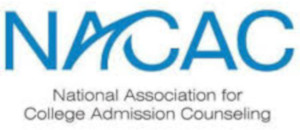Do you go to a dentist? Is she 17 years old? Do you have someone who advises you about investing, someone who helps you with submitting your tax return? Is your financial advisor or your accountant a senior in high school? When you have a health concern, do you consult an adolescent rather than an adult doctor?
You wouldn’t trust your teeth, your money, or your health to someone who isn’t old enough to vote or drink. Yet parents who are otherwise rational become incoherent when their 17-year-old daughter comes home from high school with “information” about the college admissions process. Listening to kids about early decision versus regular decision is especially fraught with false rumors and the same sort of misinformation–you can’t get pregnant when you have sex for the first time–that results in unplanned pregnacies.
As anyone who has even driven by a high school in the past millennia knows, early decision is “binding.” Students admitted early decision must attend that college. (Okay, the institution doesn’t send thugs to your house with a butterfly net and a hypodermic needle, but a deal’s a deal and going back on an ED acceptance is not a thing.) Early action is not binding. Both processes require applications to be submitted by–typically–November first, and students find out whether they got in around winter break.
“Seventy percent of successful applicants to highly selective colleges applied early decision!” exclaims an excited if uninformed senior. “I better apply ED is I want to be admitted to my first-choice HSC!”
Not true. Not even close to accurate. As the following paragraphs will point out.
- No college has a 70% ED admit rate. Okay, Middlebury came close admitting 69.3% of their first-year class recently. But by the time you get past the first 20 colleges in order (thanks as always to good friends Jeff Levy and Jennie Kent for their awesome data!) you’re down to 50% tops.
- And how much of the class is admitted ED is a completely different statistic from the likelihood that a given applicant will be admitted.
- The chance that a kid will be admitted to Rice for example (but you can corroborate these numbers at other single digit admit schools) is 16% if she applies early decision but 7% if she applies regular.
- But that’s a silly way to look at it. Are her odds twice as good?
- No. Because early decision kids and regular decision kids aren’t the same kids. This is the critical point. You can’t talk about who comes out of your study unless and until you know who went in. Early decision applicants are different from regular decision kids. How do the populations differ? Early decision kids communicate not only “if admitted, I will attend” but also—and more importantly—“if admitted I can pay whatever the tuition is” and “My family will pay whatever funds are required.” Colleges are businesses. With faculty, librarian, and maintenance crews to pay. Not to mention a new stadium to finance. Of course these institutions want a number of students who will cough up a pile of somoleans, I don’t care how many billions are in the endowment fund.
- But the point remains. ED kids are different from RD kids. If I go to the Wellness Center to take a survey of the health of gym rats, the measures of heart rate, muscle tone, and weight will be different than if I consider the same data of the folks at the Caribou Bar at three in the afternoon drinking boilermakers. A schnockered guy can stagger from the pub over to the gym. Moving from one venue to the other doesn’t mean his blood pressure is more like the guys in the gym, less like the folks in the bar.
- Changing groups doesn’t change who you are: gym group and bar group. ED applicants and RD applicants.
- No matter where you go, there you are. No matter when you apply, your transcript is still your transcript.
- And one chance in six (16%) is better than one chance in 14 (7%) but I still wouldn’t mortgage the farm.
- And although there isn’t a lot of wiggle room once the actual price of the college (full tuition minus the aid package) shows up in your inbox,there is a tremendous differential between what the highly selective college charges—if you apply ED and are admitted, you are stuck with paying what the college asks—and what the slightly less selective college requires. The difference between $90K/year at Vanderbilt, Duke,or Princeton and $50K/year at Bard, Earlham, or Eckerd can have a significant impact on family finances for years to come.
“But everyone else in my class in applying ED!” continues our hypothetical senior.
That’s as may be. But any number of kids in your class are also spending an unhealthy amount of time on social media and, for all I know, having unprotected sex and getting in cars with impaired drivers, which, I have to admit, are significantly worse decisions than an ill-advised early decision application. But still.
Which is yet another cogent reason why you don’t want to be influenced by your adolescent.
I’m not telling you not to apply ED. I am asking you to look underneath the data and to ignore the rumors to understand if ED is right for your family.





